This post is a sequel to the post: 9 First Classical Anthologies for Piano Students. As mentioned before, anthologies are great for exposing students to a variety of composers and styles of literature at a great value.
After the student’s first introduction to classical pieces, there are many, MANY of different options for classical anthologies that are suitable for late elementary / early intermediate level students and beyond. We piano teachers are fortunate to have such a variety to choose from! Rather than resorting to using the same 2-3 books, I try to take advantage of the huge variety of books available and enjoy the variety of literature available for our students to play. I am always on the lookout for new things to use with my students. 🙂
Below are descriptions of a smattering of different anthologies, along with my comments about each one. Be sure to share about your favorite anthologies in the comments!
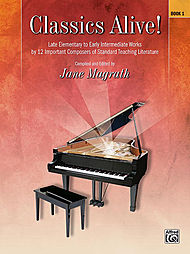
Classics Alive!, Book 1, ed. by Jane Magrath (Alfred).
I love this book, and all the selections within it. It’s a great value, with 72 selections. The pieces start at a late elementary level. The editing is great, and the typeset is clean and easy-to-read.
Books 1, 2, and 3 are available.

Melodious Masterpieces, Book 1, ed. by Jane Magrath (Alfred).
Again, I love all the selections in this book! Book 1 contains 38 selections, starting at an early intermediate level. The pieces are chosen for the purpose of encouraging the student to play expressively, or to suit the student who enjoys melodic, poignant literature.
This book contains mostly Romantic pieces, although all periods are represented.
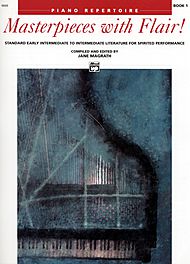
Masterpieces with Flair!, Volume 1, ed. by Carole L. Bigler and Valerie Lloyd Watts (Alfred).
This book contains “Energetic and lively pieces to appeal to students who like fast and sparkling music.”
The pieces start at an early intermediate level.
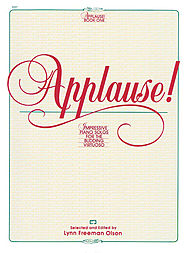
Applause! — Impressive Piano Solos for the Budding Virtuoso, Book 1, ed. by Lynn Freeman Olson (Alfred).
I love this book! Book 1 contains 19 selections at a late intermediate level. The pieces chosen are crowd-pleasers and motivating pieces for students to learn.
Book 1 and 2 available, as well as CD‘s for each level.
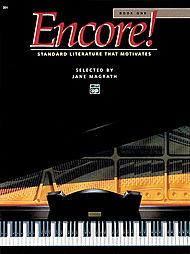
Encore! – Standard Literature that Motivates, Book 1, ed. by Jane Magrath (Alfred).
This is another great series from Jane Magrath. The selections are chosen to be motivating pieces for students to learn.
Book 1 contains 22 selections, at a late intermediate level. Books 1-3 available.
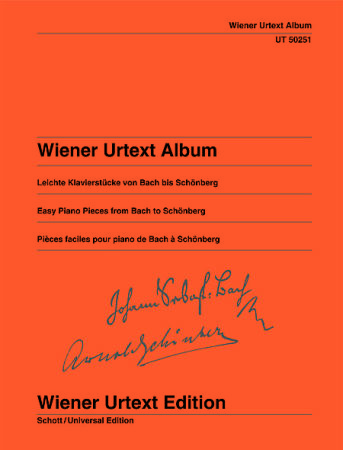 Vienna Urtext Album: Easy Piano Pieces from Bach to Schöenburg
Vienna Urtext Album: Easy Piano Pieces from Bach to Schöenburg
This anthology is wonderful because it contains such a thorough collection of pieces that every intermediate-level pianist should learn or be aware of. Plus, the fact that it is an urtext edition means that the editing is outstanding. The typeset is clean and clear. Containing over 35 pieces, this book is a great value. This is a great option for the advancing student.

Henle Album: Piano Music from Bach to Debussy (G. Henle).
Henle is well-known for their trustworthy urtext editions, as well as their creamy pages and quality bindings.
This little-known anthology is a great way for an advancing student to build their music library. The anthology contains some familiar favorites as well as quite a few little-known pieces. The selections are at a late intermediate level.
Celebration Series Perspectives: Preparatory Piano Literature, by the Royal Conservatory Music Development Program (Frederick Harris).
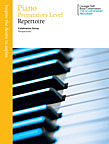
The Prep level book contains 31 pieces. These books contain a lot of 20th/21st century pieces, by mostly Canadian composers. With most classical anthologies, I regret there not being more modern/contemporary selections — but with this book, I actually wish there were more of the classics! A CD is available separately, as well as a Student Workbook that contains theory/analyzing exercises that relate to the pieces in the repertoire book.
This book is rather pricey, in my opinion. I don’t use this book unless it is with a student who will be taking the RCM exams and I am unable to find the selections in other collections.
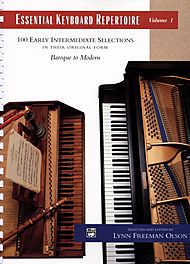
Essential Keyboard Repertoire, Volume 1, ed. by Lynn Freeman Olson (Alfred).
This is a nice series! The editing is good, and they are a great value.
Volume 1 contains 100 selections at an early intermediate level. The pieces range from Baroque to Modern periods. There is a corresponding CD available.
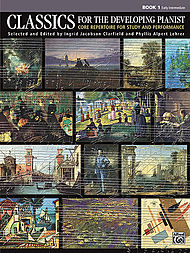
Classics for the Developing Pianist, Book 1, ed. by Ingrid Jacobson Clarfield and Phyllis Alpert Lehrer (Alfred).
This is a series containing 5 levels.
Book 1 contains 20 selections at the early intermediate level. The editing is good, as usual with materials from Alfred. The most recent selections are pieces by Bartok and Rebikov.
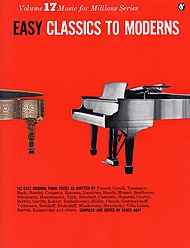
Easy Classics to Moderns (Music for Millions Series), Vol. 17, ed. by Denes Agay.
This book is a great value, with 142 selections. The pieces are at an intermediate level, from Renaissance to Modern periods. The typeset is not as clean as more recent publications, but it is decent.
Later volumes in this series (27, 37, 47) include consecutively more difficult pieces. Volume 67 contains sonatinas and sonatas.

Easy Piano Classics, ed. by Walter Noona (Heritage Music Press).
This books is a good value, with 53 selections. The pieces are at the early intermediate level, starting with some simple Kabalevsky pieces and advancing up to Fur Elise. The pieces chosen are all great pieces that I think every intermediate student should learn or be aware of.
The typeset is clear and fairly large. The Bach pieces and the other Baroque pieces are not over-edited, allowing the teacher and student to make articulation choices themselves.

Keys to Artistic Performance, Book 1, ed. by Ingrid Jacobson Clarfield and Dennis Alexander (Alfred).
Books 1-3 are available. Book 1 contains 24 selections. The editing is good. The score contains little technique and artistry tips on each piece.
This quote from the description says it all: “This unique series teaches skills used by professional pianists to make their performances more expressive and dramatic. Students will explore five keys for achieving performance artistry: color, pedaling, rubato/rhythmic freedom, characterization and choreography. In-depth information helps students understand the concepts of balance, voicing, pedal techniques, how to move at the piano.”
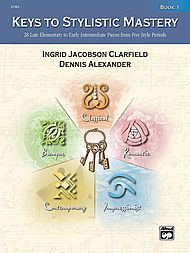
Keys to Stylistic Mastery, Book 1, ed. Ingrid Jacobson Clarfield and Dennis Alexander (Alfred).
Books 1-3 are available. Book 1 contains 28 selections.
The goal of this series is to teach “the basic principles of the five stylistic periods (Baroque, Classical, Romantic, Impressionist and Contemporary) to piano students. Each time period includes a newly composed piece by Dennis Alexander. The book includes information about each time period, short biographies for each composer, keyboard instruments, typical forms.”
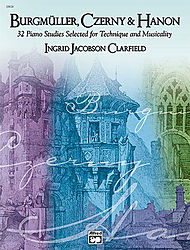
Burgmuller, Czerny, and Hanon — Piano Studies Selected for Technique and Musicality, Volume 1, ed. by Ingrid Jacobson Clarfield (Alfred).
Books 1-3 available. Volume 1 has 64 pages. I love Burgmuller, and the selections from Czerny and Hanon are good ones. This is a nice book to give to a student in order to increase facility and musicality.
“An outstanding compilation of piano etudes and exercises from the ever-popular Bürgmuller’s 25 Progressive Pieces, Opus 100, Czerny’s Practical Method for Beginners on the Piano, Opus 599, and Hanon’s The Virtuoso Pianist. Etudes are organized into four units according to difficulty and emphasize different aspects of technique and musicianship. Hanon exercises are included within each unit to reinforce the need for finger strength, independence and agility. Information about each composer’s life, music and books is also provided.”

Piano Literature of the 17th, 18th, and 19th Centuries, Book 2, from the Frances Clark Library (Alfred).
(Book 1 of this series is actually not a classical anthology; it is a collection of familiar folk tunes for the student to learn.) Books 2, 3, 4, 5, and 6 offer classical pieces. The pieces in Book 2 are at a late elementary level.
You will notice that the title indicates that there are no 20th/21st century pieces including in this anthology. The Frances Clark Library offers a different set of books to cover those centuries: The Contemporary Piano Literature books, Levels 1-6.
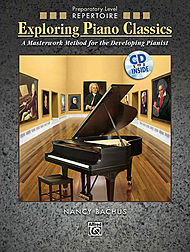
Exploring Piano Classics – Repertoire Book, Preparatory Level, ed. by Nancy Bachus (Alfred).
The prep level claims to be at a late elementary level, but I might argue that it is more appropriate for an early intermediate student — I think some of the selections are rather tricky for the young student. The prep level contains 17 selections.
An accompanying Technique book available, which contains additional repertoire as well as short exercises to prepare the student for the musical and technical challenges the student will encounter in the pieces. These books contain lots of historical information, including black-and-white photos of historical artwork and composers. Levels 1-5 are available after the Preparatory Level.

Bastien Piano Literature, Volume 1, ed. by Jane Smisor Bastien (Kjos).
This series has been around for a long time, and is a favorite of many teachers. Volume 6, however, was recently released (in 2012) for the first time! Accompanying CDs are available with recordings of the selections.
Volume 1 contains 17 selections at an early intermediate level.

Masterclass Repertoire & Conversations, Volume 1, ed. by Janet Vogt (Heritage Music Press).
This looks like a very interesting option for the dedicated student. The books can be obtained with or without the CD included, but the CD contains performances of the pieces followed by masterclass discussions by Janet Vogt, Hsing-ay Hsu, and Scott McBride Smith.
Volume 1 contains 26 pieces at the late elementary level. Volumes 1-4 available.

Easier Piano Classics — 89 Original Works by 28 Great Composers (Hal Leonard).
This book is a great value, with 89 selections. The pieces are at an intermediate level. The pieces are very lightly edited — in fact, with no fingering.
This book is appropriate for a more advanced student who perhaps needs some easier pieces to play for an event or for quick-study pieces.
* * * * *
Please share about your favorite classical anthologies below!


